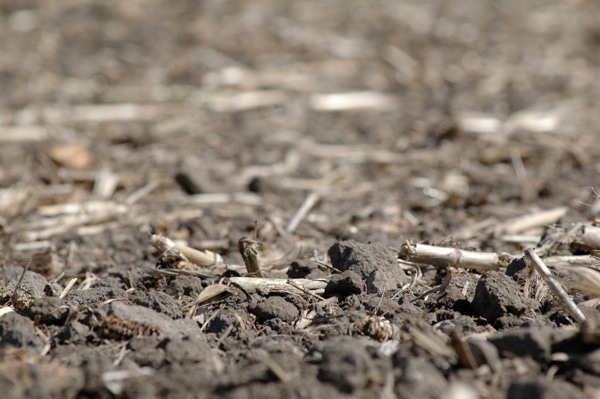June 5, 2012

Soybeans that were not planted to moisture are sitting there in the ground just like they were still in the bag. They will continue to rest in the soil until they receive adequate moisture for germination. Soybean is an amazing crop and it will continue to sit until conditions are right.
At the Wooster, OH, location, we planted into marginal conditions for some seed treatment tests the week of May 14. Seedlings are in three different growth stages, and more keep emerging with every rain. The one challenge will be if the seed has swelled and germinated to the point that with dry weather the cotyledons get too dry. This will take quite a while and the cool weather that is forecast may hold this off until Ohio receives the next rain shower.
Before you start pulling the planter out again, run a germination test on the seed that has been sitting in the ground, collect a few from different parts of the field and place them on a moist (not sopping wet) paper towel, cover them with a second moist paper towel and wait 48 hours to check. Don’t let the towels dry out. If the seed is healthy – it will germinate and produce a nice white root. If it is struggling the seed will shrink.
Under these conditions, we are not too worried about pathogens during this dry spell. This will also have an effect on inoculants. The viability of those is compromised under these conditions and we will be relying on the native Rhizobium that is very prevalent in Ohio production fields. The fungicide seed treatments that were applied will be good as long as the seed coat is still on the seed.
How long should you wait? One week after the next saturating rain, this is the length of time it takes for seed to germinate and emerge from the soil. If you replant now, you could end up doubling your stand population, which will further reduce yield due to the competition among all of these plants. With the low levels of rain in the long-term forecast, we should avoid high populations to limit the competition among the plants for water, which this year may turn out to be a precious commodity.
You May Also Like




